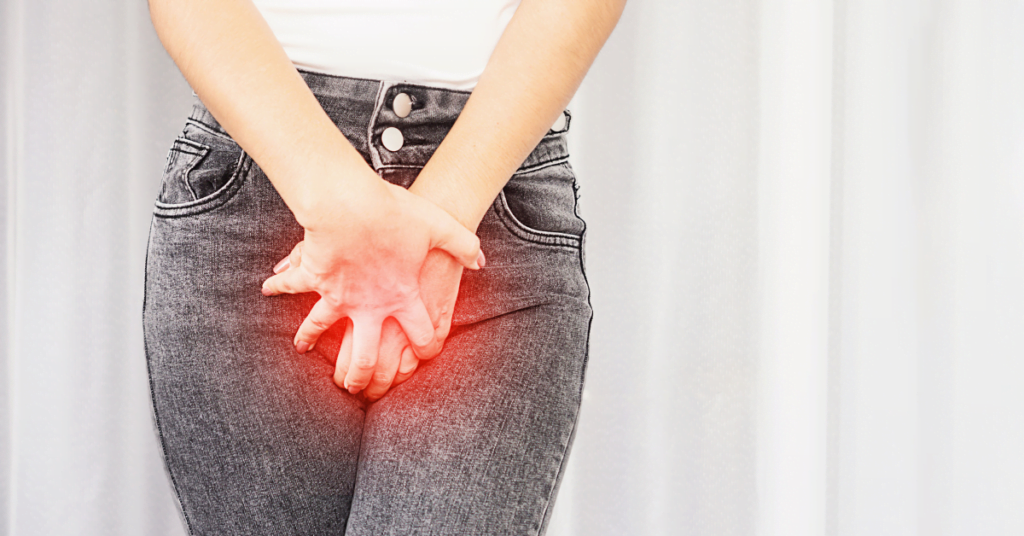The healthcare realm constantly evolves, presenting groundbreaking solutions to medical challenges old and new. One such evolution we’ve witnessed is the unexpected yet highly promising union of Overactive Bladder (OAB) treatment and Botox, a substance once solely synonymous with cosmetic enhancements. This pairing might raise eyebrows in astonishment, but the compelling evidence behind its effectiveness is reshaping our understanding of both OAB and Botox. In this expansive dive, we will journey through the intricate world of OAB, the multifaceted applications of Botox, and how their convergence promises a brighter future for countless patients around the globe. Join us as we unravel the layers behind this revolutionary approach to urological care. This blog delves into the fascinating relationship between OAB and Botox, uncovering how it works, its benefits, and what those affected can anticipate. Dive in with us as we explore Botox’s transformative role in the realm of OAB management.
Understanding Overactive Bladder (OAB)
Overactive Bladder (OAB) is a urological condition characterized by an urgent and frequent need to urinate. This urgency can be so intense that it’s often challenging to reach a bathroom in time, leading to episodes of incontinence. It’s a condition that doesn’t discriminate, affecting both men and women, young and old, though its prevalence tends to increase with age.
Symptoms of OAB
While the primary symptom of OAB is a sudden urge to urinate, this condition encompasses several symptoms:
- Urgency: A sudden and overpowering need to urinate, often without warning.
- Frequency: Needing to urinate multiple times during both day and night, typically more than eight times in a 24-hour period.
- Nocturia: Being woken up multiple times during the night to urinate.
- Urge Incontinence: The involuntary loss of urine immediately following the sensation of urgency.
What Causes OAB?
The human bladder is a muscular organ responsible for storing urine until it’s excreted from the body. In a normally functioning bladder, nerve signals inform the brain when the bladder is full, and in response, the bladder muscle contracts and urine is released. However, with OAB, these muscles contract involuntarily and more frequently, even when the volume of urine in the bladder is low.
Several factors and conditions can lead to or exacerbate OAB:
- Aging: As we age, the bladder’s capacity may decrease, and involuntary bladder contractions become more frequent.
- Urinary tract infections: These can irritate the bladder, causing strong urges to urinate.
- Bladder abnormalities: Stones or tumors in the bladder can lead to symptoms of OAB.
- Neurological disorders: Conditions like stroke, multiple sclerosis, or Parkinson’s disease can interfere with bladder function.
- Medications: Some medications that increase urine production or irritate the bladder can exacerbate OAB symptoms.
- Excessive fluid consumption: Consuming large amounts of fluid, especially caffeine or alcohol, can increase urine output and symptoms.
Impact on Quality of Life
The repercussions of OAB are not just physical. The condition can have a profound impact on a person’s emotional well-being, social interactions, sleep patterns, and overall quality of life. The unpredictability of OAB symptoms can lead to anxiety and embarrassment, making individuals hesitant to engage in social activities, work, or even routine outings.
In the subsequent sections, we’ll delve deeper into the transformative role Botox plays in treating this condition, offering hope and a renewed sense of freedom to those grappling with OAB.

The Limitations of Traditional Treatments
In the quest to manage and alleviate the symptoms of Overactive Bladder (OAB), traditional treatments have long been the cornerstone of therapeutic strategies. However, while these treatments have certainly provided relief for many, they also come with their own set of limitations, leaving some patients searching for more effective solutions.
1. Inconsistency in Efficacy
The most prominent drawback of traditional treatments is their variable efficacy. Oral medications, for instance, might work wonders for one individual but may offer limited relief to another. This inconsistency can lead to a trial-and-error approach, prolonging the period before a patient finds a suitable treatment regimen.
2. Side Effects of Medications
Oral medications, such as anticholinergics, prescribed for OAB can come with a slew of side effects. These might include dry mouth, constipation, blurred vision, and even cognitive disturbances in older patients. For some, these side effects can be so bothersome that they choose to discontinue the medication, leaving their OAB symptoms unmanaged.
3. Commitment to Lifestyle Changes
Lifestyle modifications, like reducing fluid intake, avoiding caffeine, and timed voiding, require a significant commitment from the patient. While these strategies can be effective, they also demand a considerable alteration to one’s daily life, which can be challenging to maintain in the long run.
4. Limited Longevity of Results
Pelvic floor exercises, often recommended as a first-line treatment for OAB, can be effective in strengthening the muscles that control urination. However, the benefits of these exercises often require continuous practice. If a patient stops the exercises, the symptoms can return, making it a temporary solution unless regularly maintained.
5. Impact on Quality of Life
While traditional treatments can offer relief, they don’t always address the psychological and emotional strain of OAB. The fear of sudden urges, potential accidents, and the need to always be near a restroom can have a profound impact on a person’s social life, self-esteem, and overall mental well-being.
While traditional treatments have played a pivotal role in managing OAB, their limitations highlight the need for innovative approaches. These challenges have paved the way for new treatments, such as Botox, to take center stage, offering hope to those seeking a more comprehensive solution to their OAB symptoms.

Botox: Not Just Skin Deep
Botox, medically known as Botulinum toxin, has etched its mark as the go-to remedy for erasing fine lines and wrinkles. However, its utility extends far beyond the realm of aesthetics. Over the years, researchers and medical professionals have harnessed Botox’s unique properties to treat a wide array of medical conditions, from migraines to muscle spasms. Among its transformative medical applications is the treatment of Overactive Bladder (OAB).
Botox’s Multifaceted Role
While most people recognize Botox for its age-defying benefits, its roots are firmly planted in medical science:
- Muscle Relaxation: At its core, Botox functions by blocking nerve signals in the muscles where it is injected. This prevents muscle contractions, leading to muscle relaxation. This property is invaluable in treating conditions characterized by muscle overactivity or spasms.
- Neurological Disorders: Conditions such as cervical dystonia, characterized by involuntary neck muscle contractions, and certain types of eye muscle problems have found relief with Botox. Its ability to inhibit muscle activity offers reprieve from the debilitating effects of these disorders.
- Chronic Migraines: The exact mechanism remains a topic of study, but Botox has proven to be an effective preventive treatment for chronic migraines, reducing the frequency and severity of these headache episodes.
Beyond Aesthetic Boundaries
Botox’s venture into urology might seem like a leap, but its muscle-relaxing properties offer a logical solution to the involuntary muscle contractions seen in OAB. By targeting specific muscles in the bladder, Botox can mitigate the urgent and frequent contractions that plague OAB patients.
Safety and Efficacy
While Botox has been around for decades and its safety profile is well-documented, it’s essential to understand that any medical treatment has its risks. However, when administered by trained professionals in appropriate doses, Botox offers a safe and effective solution for numerous conditions beyond its cosmetic applications.
The journey of Botox, from wrinkle-smoother to a life-changing medical treatment, stands testament to the ever-evolving world of medical science. Its potential and versatility remind us that solutions can often be found in the most unexpected places.

The Synergy: Using Botox for OAB Treatments
In the realm of medical science, innovations often emerge from unexpected synergies. The convergence of Botox and Overactive Bladder (OAB) treatments exemplifies this trend, revealing a potent solution for a distressing urological condition.
Mechanism of Action
When considering Botox for OAB treatments, the underlying principle relies on the toxin’s nerve-blocking properties. Here’s a deeper dive into how this works:
- Neurotransmitter Blockade: Botox works by inhibiting the release of acetylcholine, a neurotransmitter responsible for muscle contractions. By doing so, it tempers the uncontrolled contractions of the bladder muscle that lead to the frequent urge to urinate, which characterizes OAB.
- Targeted Application: For treating OAB, Botox is injected directly into the bladder’s detrusor muscle using a cystoscope, a thin tube with a camera that enters through the urethra. This ensures that the Botox acts directly on the overactive bladder muscles, minimizing the risk of affecting surrounding tissues.
Efficacy and Outcomes
The results of using Botox for OAB have been nothing short of transformative for many patients:
- Reduced Urgency: A significant reduction in the sudden urge to urinate, offering patients a greater sense of control and improved quality of life.
- Decreased Frequency: Patients often report a notable decrease in the number of times they need to visit the bathroom daily.
- Increased Capacity: Botox can help increase the bladder’s holding capacity, allowing it to store more urine without triggering an overactive response.
- Long-lasting Relief: While the effects of Botox are temporary, they can last for several months, granting prolonged relief from OAB symptoms.
Versatility of Treatment
One of the standout advantages of Botox for OAB is its adaptability:
- Dosage Adjustments: Depending on the severity of the condition and the patient’s response to the initial dose, physicians can adjust the amount of Botox administered in subsequent sessions.
- Complementary with Other Treatments: Botox for OAB can be used in conjunction with other treatments or medications, allowing for a comprehensive approach to managing the condition.
The alliance between Botox and OAB treatments showcases the power of interdisciplinary medical approaches. By repurposing a toxin known for aesthetic benefits, countless individuals suffering from the discomfort and unpredictability of OAB now have access to an effective, long-lasting solution. As research continues, it’s thrilling to anticipate what other therapeutic applications might be unearthed for Botox in the future.

The Evidence: Clinical Outcomes and Patient Feedback
The intersection of Botox and Overactive Bladder (OAB) treatments is not just a mere medical hypothesis. It’s grounded in robust clinical data, coupled with transformative patient testimonials. Here, we delve into the clinical outcomes and patient feedback that fortifies the credibility of this groundbreaking treatment.
Clinical Trials and Their Findings
Over the past decade, several clinical trials have rigorously examined the efficacy of Botox in treating OAB:
- Randomized Controlled Trials (RCTs): These trials, considered the gold standard in medical research, have consistently shown a significant reduction in daily episodes of urinary urgency and incontinence among patients treated with Botox compared to placebo.
- Duration of Effectiveness: Most studies found that a single treatment’s effects lasted for up to six months. This long duration means fewer visits to the doctor and prolonged relief for patients.
- Quality of Life Measures: Alongside the objective reduction in OAB symptoms, trials consistently reported improvements in patients’ quality of life scores. This includes factors such as emotional well-being, physical comfort, and social interactions.
Patient Testimonials
Beyond hard data, the real-world feedback from patients offers a profound perspective:
- Rediscovered Independence: Many patients have expressed a renewed sense of autonomy. The unpredictable and frequent nature of OAB often restricts individuals from long trips, social events, or even basic outdoor activities. Post-treatment, patients often describe the joy of reclaiming these simple freedoms.
- Reduction in Daily Stress: The constant fear of accidents can be mentally taxing. Numerous testimonials highlight the peace of mind that comes with reduced urgency and incontinence.
- Enhanced Sleep Quality: Nighttime urgency can disrupt sleep, leading to fatigue and reduced daily productivity. Many patients have reported uninterrupted sleep following Botox treatment for OAB.
- Personal Stories: Individual accounts of experiences, from the procedure itself to life post-treatment, provide invaluable insights. Common themes include increased confidence, the joy of engaging in physical activities without anxiety, and overall improved well-being.
Both clinical outcomes and patient feedback paint a compelling picture of Botox as a revolutionary treatment for OAB. These positive results, backed by science and supported by personal experiences, highlight Botox’s potential not just as a symptom controller but as a life-changer for those grappling with OAB. As with all medical procedures, continued research and patient-centered approaches are vital. Still, the present evidence firmly establishes Botox as a beacon of hope in the OAB treatment landscape.

Considerations and Side Effects
When contemplating any medical treatment, it’s crucial to weigh the benefits against potential risks. The application of Botox for Overactive Bladder (OAB) is no exception. While the transformative effects of this treatment are undeniable, as with most therapeutic interventions, there are associated considerations and side effects to acknowledge.
Primary Considerations
- Medical History: Before proceeding with Botox treatment for OAB, patients must disclose their full medical history to the practitioner. Conditions like myasthenia gravis, Lambert-Eaton syndrome, or certain allergies might make Botox inadvisable.
- Medication Interactions: Some drugs, especially certain antibiotics or muscle relaxants, might interact with Botox. It’s crucial to provide the practitioner with a complete list of current medications, including over-the-counter drugs and supplements.
- Pregnancy and Nursing: The effects of Botox on pregnant or nursing women are not thoroughly studied. It is advisable to discuss potential risks with a healthcare provider if considering treatment during this period.
Potential Side Effects
While Botox has been deemed safe and effective for OAB treatment, some patients may experience side effects:
- Urinary Tract Infections (UTIs): A small percentage of patients might develop UTIs post-treatment. Symptoms include pain during urination, increased urgency, and blood in the urine.
- Urinary Retention: Some individuals may find it difficult to empty their bladder completely after the treatment. In such cases, temporary self-catheterization might be necessary.
- Localized Pain: Some discomfort or pain at the injection site is possible, although it typically subsides within a few days.
- General Side Effects: As with any medical procedure, there might be rare side effects such as fatigue, dry mouth, or muscle weakness. These are generally temporary and resolve without intervention.
- Systemic Effects: Although extremely rare, there is a minute possibility of Botox spreading to other parts of the body, which could lead to botulism-like symptoms. Immediate medical attention should be sought if difficulties in swallowing, speaking, or breathing occur.
Consultation and Post-Treatment Monitoring
It is imperative for patients to have an open dialogue with their healthcare provider:
- Pre-treatment Discussion: A detailed discussion with a urologist or relevant medical expert ensures that the patient is fully aware of potential side effects and post-treatment expectations.
- Post-treatment Follow-ups: Regular monitoring after the procedure ensures any side effects are detected and addressed promptly.
While Botox has proven to be a groundbreaking solution for many grappling with OAB, it’s essential to approach the treatment informed and prepared. Knowledge of both the transformative potential and the associated considerations empowers patients to make well-rounded, confident decisions about their health journey.

Looking Ahead: The Future of OAB and Botox
The marriage of Botox and Overactive Bladder (OAB) treatments has heralded a new era in urology and patient care. But as we peer into the horizon, it’s clear that this is just the beginning. The future holds immense promise, with ongoing research, technological advancements, and broader applications potentially revolutionizing the way we approach OAB and similar disorders.
Advancements in Application Techniques
While the current method of injecting Botox into the bladder wall has shown significant efficacy, researchers are continually exploring more refined techniques. This includes:
- Precision-guided injections: Leveraging imaging technologies to target specific areas of the bladder for a more tailored approach.
- Optimized dosage: Customizing Botox dosages based on individual patient needs, potentially improving treatment outcomes and reducing side effects.
Extended Release Formulations
The development of extended-release formulations of Botox could prolong the duration of its effects, thereby reducing the frequency of treatments required. This would not only enhance patient comfort and convenience but also reduce the cumulative costs associated with repeated procedures.
Complementary Therapies
As our understanding of OAB and its underlying mechanisms grows, there’s potential to combine Botox with other therapeutic agents or modalities:
- Synergistic drug combinations: Pairing Botox with other medications might amplify its effects or extend its duration.
- Neurostimulation: Combining Botox with neuromodulation techniques, such as sacral nerve stimulation, could offer dual benefits and cater to patients who don’t respond optimally to Botox alone.
Broader Applications
Beyond OAB, the success of Botox might pave the way for its application in other bladder and pelvic floor disorders. Preliminary studies are already hinting at its efficacy in conditions such as interstitial cystitis and pelvic floor spasms.
Patient-centric Approaches
The future of medical care is increasingly leaning towards holistic, patient-centric approaches. As Botox treatments for OAB become more commonplace, we foresee:
- Enhanced patient education: Empowering patients with comprehensive knowledge about their condition and the available treatments.
- Personalized treatment plans: Leveraging data analytics and patient feedback to create highly individualized treatment regimens.
- Support communities: Building communities where patients can share their experiences, offer support, and disseminate knowledge.
The fusion of Botox and OAB treatments has undeniably been transformative, offering relief to countless individuals. Yet, as we stand at the cusp of these innovations, we believe that the best is yet to come. The future beckons with the promise of enhanced techniques, broader applications, and an unwavering commitment to improving patient lives.
In Conclusion: Botox – A Game Changer in Urology
In the realm of medical science, few innovations have been as transformative as the application of Botox in urological conditions. What began as a cosmetic solution to facial wrinkles has evolved into a therapeutic powerhouse, changing the landscape of urological treatments and offering hope to countless patients worldwide.
Beyond Cosmetic Frontiers
The journey of Botox from aesthetics to therapeutics is a testament to medical ingenuity. Its ability to relax muscles found a profound application in urology, primarily in conditions characterized by overactivity or spasticity of the bladder. The versatility of this neurotoxin to address both cosmetic and medical challenges underscores its unique potential.
A New Lease on Life for OAB Patients
For those grappling with Overactive Bladder (OAB), Botox has been nothing short of a miracle. The incapacitating urge, frequency, and the social embarrassment associated with incontinence have, for many, been alleviated or significantly reduced. Patients previously bound by the limitations of their condition are rediscovering freedom, confidence, and an improved quality of life.
Setting the Gold Standard
As clinical outcomes continue to validate the efficacy of Botox in treating OAB and similar disorders, it’s gradually emerging as a gold standard in urology. Its safety profile, combined with significant symptomatic relief, has positioned it as a preferred choice among both clinicians and patients. Furthermore, its non-invasive nature, compared to surgical interventions, offers an attractive alternative with minimal downtime.
Paving the Way for Broader Applications
The success story of Botox in OAB has ignited interest in its potential applications in other urological conditions. From interstitial cystitis to neurogenic bladder, the possibilities are vast. As research progresses, we might soon witness the dawn of an era where Botox becomes a cornerstone in managing a spectrum of urological ailments.
Embracing a Bright Future
As we reflect on the journey of Botox in urology, it’s evident that its impact is profound and far-reaching. While we celebrate the strides made thus far, we remain optimistic about the future. With ongoing research, technological advancements, and a deeper understanding of the human body, Botox’s potential in urology seems limitless.
In wrapping up, the entry of Botox into the world of urology marks a pivotal moment in medical history. It stands as a beacon of hope for many and embodies the endless possibilities that arise when science, innovation, and patient care converge. Indeed, Botox is not just a game changer—it’s a life changer.


